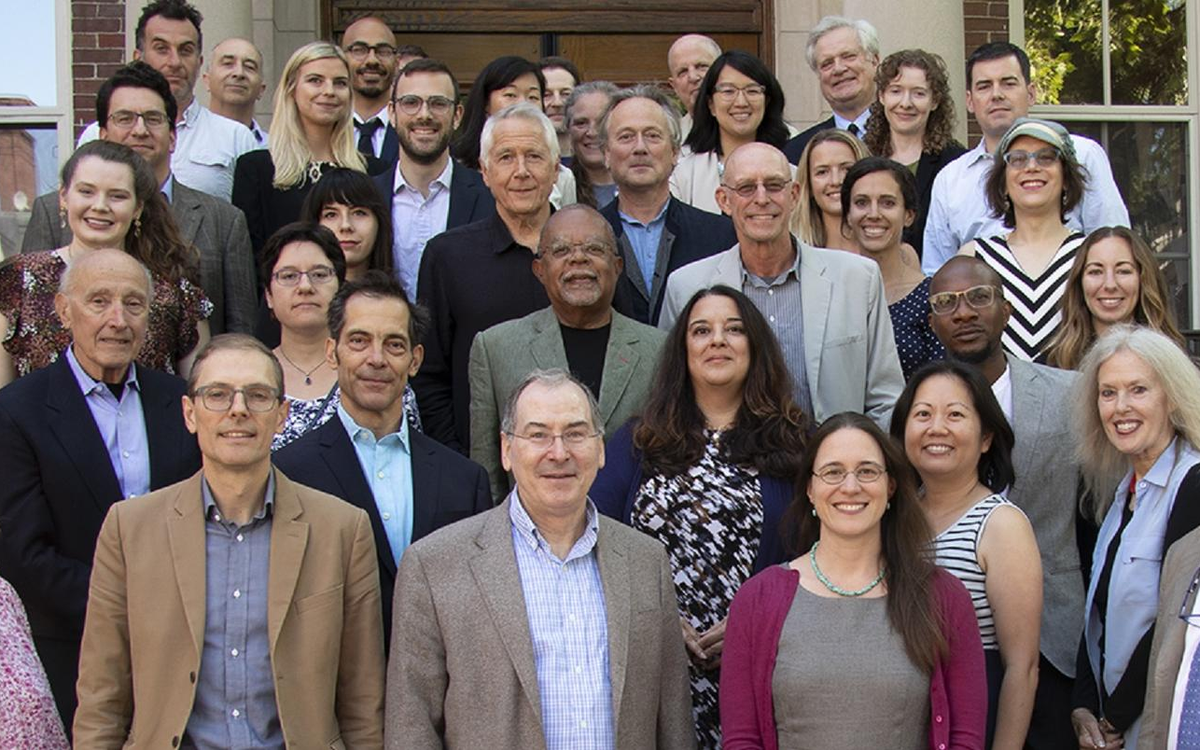
Diversity at Harvard: Tenured vs. Tenure Track Faculty
Analyzing changes in faculty diversity across different departments from 2011 to 2021.
Every year, it seems that Harvard’s incoming class of freshmen is getting more diverse. In fact, the proportion of incoming students who identified as African American/black increased from 14.8 percent for the Class of 2024 to 18 percent for the Class of 2025. A similarly large increase occurred for students who identify as Asian American, the proportion increasing from 24.5 percent of the Class of 2024 to 27.2 percent of the Class of 2025. These results can be attributed to Harvard’s efforts to foster diversity within their student body. However, there has been much less news about changes in Harvard’s faculty diversity.
As a follow-up to our 2018 and 2021 articles on faculty diversity, HODP analyzed the change in representation from 2011 to 2021 of four demographic categories of faculty: women, underrepresented minorities, Asians, and Whites. Within each of these four demographics, HODP also compared the change in representation between tenured faculty and tenure track faculty.
Data
The data used in this analysis were collected from Harvard’s Office of Faculty Development & Diversity. We examined the 2021 Annual Report to obtain our data on faculty diversity statistics from 2011 to 2021. This dataset contained data for the four demographics of faculty listed earlier. As also previously mentioned, the dataset contained separate entries for tenured faculty and tenure track faculty.
Proportion of Female Faculty Generally Rises
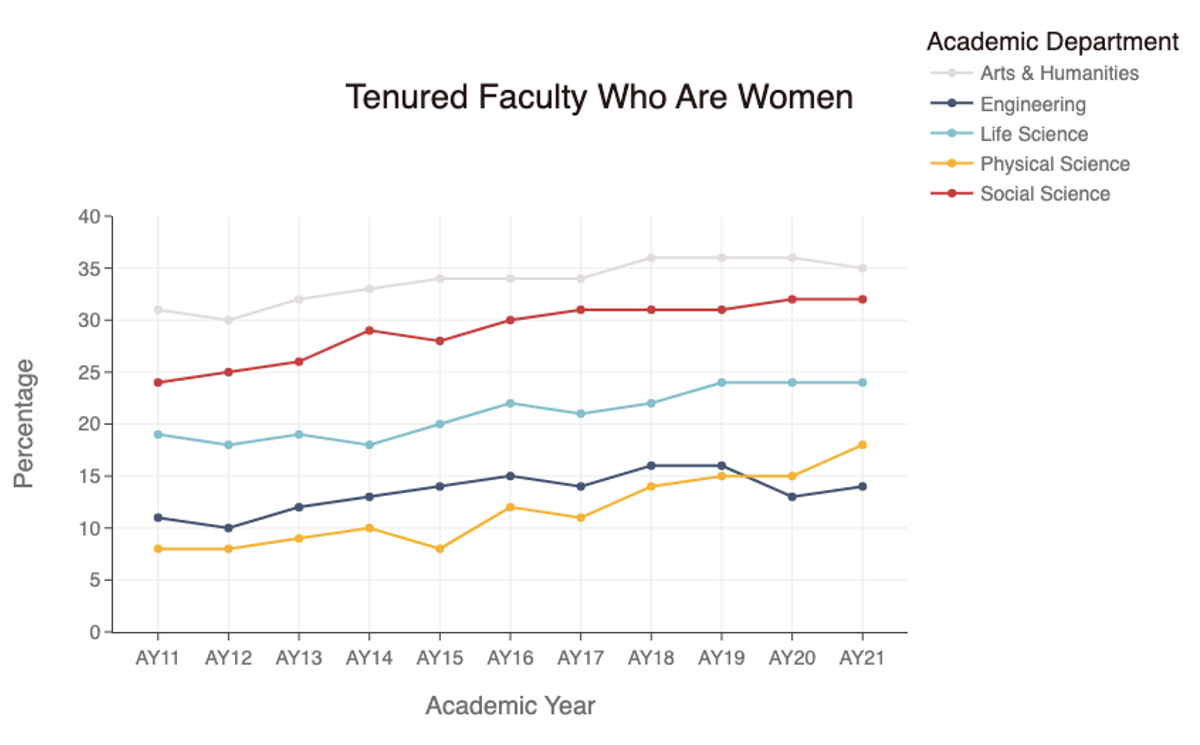 Figure 1: The above graph shows the percentage of tenured faculty members per department who identify as female. The data span from 2011 to 2021.
Figure 1: The above graph shows the percentage of tenured faculty members per department who identify as female. The data span from 2011 to 2021.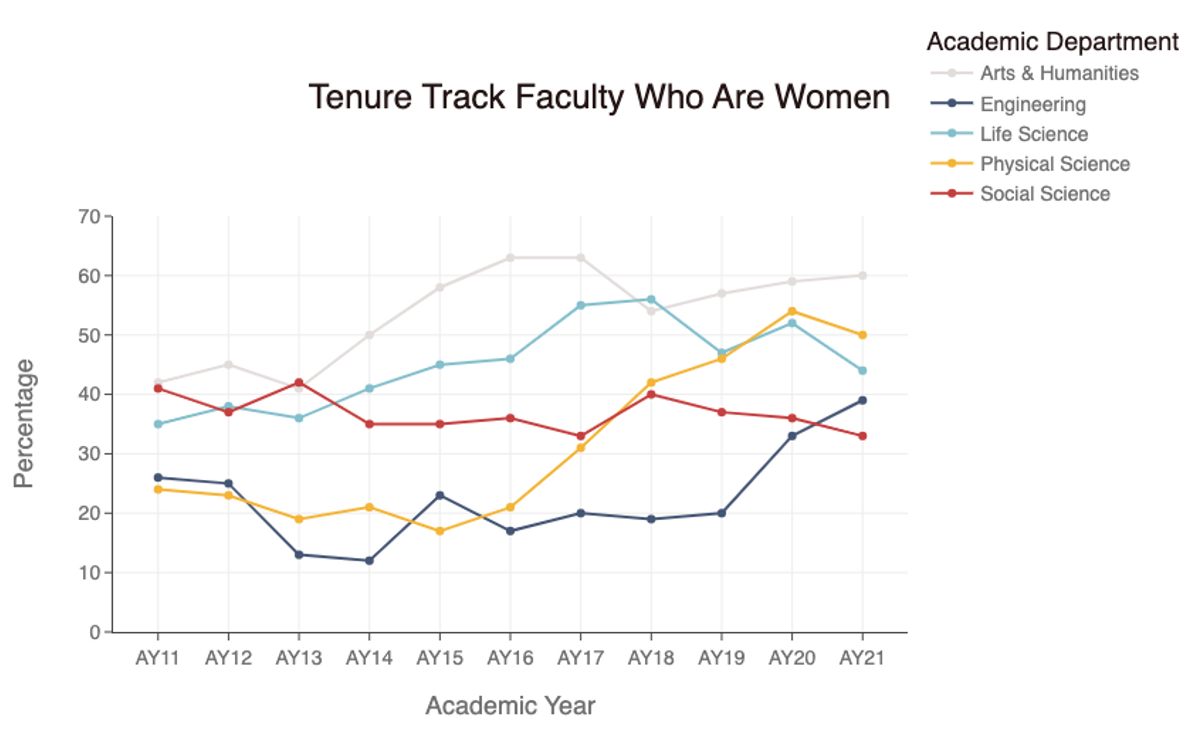 Figure 2: The above graph shows the percentage of tenure track faculty members per department who identify as female. The data span from 2011 to 2021.
Figure 2: The above graph shows the percentage of tenure track faculty members per department who identify as female. The data span from 2011 to 2021.The only group that saw a decline in their proportion was tenure track faculty in the Social Science department, who went from 41 percent in 2011 to 33 percent in 2021. This change is also noteworthy, as we see that Social Science was the department with the second-highest proportion in 2011, but in 2021, it was the department with the lowest proportion. Examining the female tenure track faculty in the Engineering and Physical Science departments, we notice a major increase from 2011 to 2021, as the proportions have increased from 26 percent and 24 percent to 39 percent and 50 percent, respectively. This suggests that Harvard has recently been hiring a high number of women within these departments, since tenure track faculty tend to have been employed more recently.
URM Faculty Proportion Increased Minimally or Didn’t Increase Across Most Departments
 Figure 3: The above graph shows the percentage of tenured faculty members per department who identify as an underrepresented minority. The data span from 2011 to 2021.
Figure 3: The above graph shows the percentage of tenured faculty members per department who identify as an underrepresented minority. The data span from 2011 to 2021.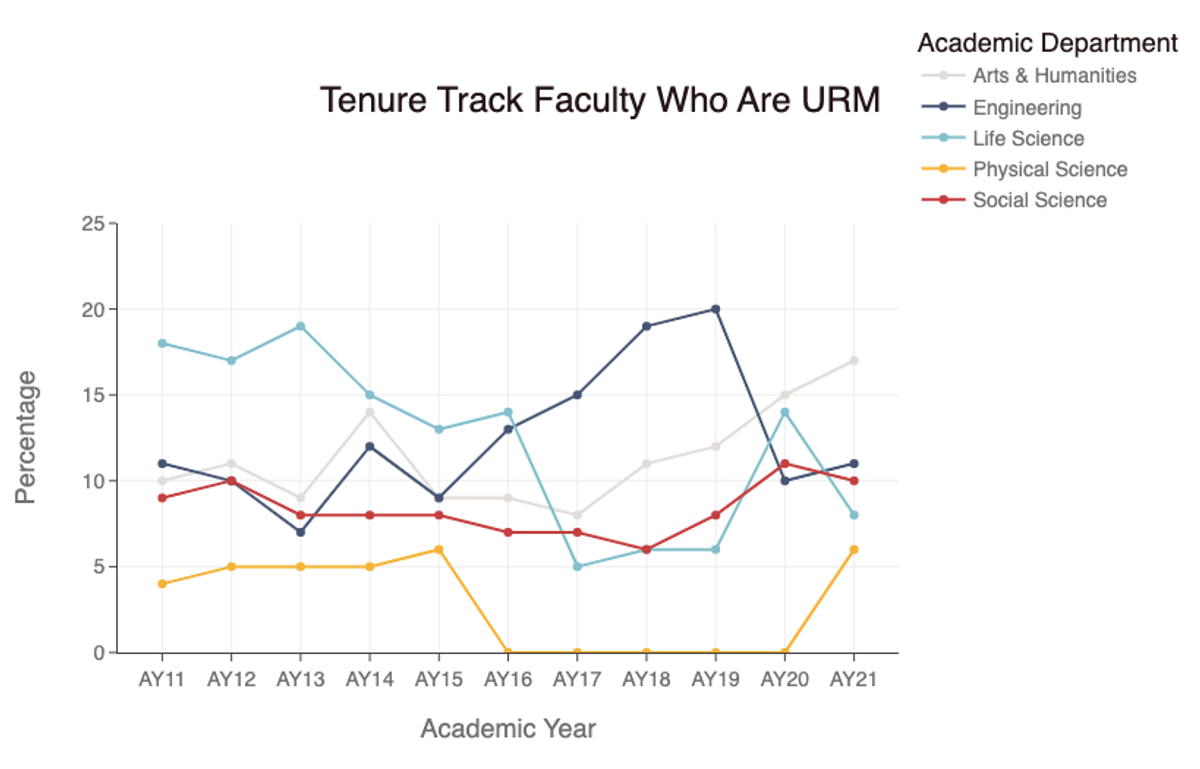 Figure 4: The above graph shows the percentage of tenure track faculty members per department who identify as an underrepresented minority. The data span from 2011 to 2021.
Figure 4: The above graph shows the percentage of tenure track faculty members per department who identify as an underrepresented minority. The data span from 2011 to 2021.In both the tenured and tenure track populations of URM faculty, there has been no major increase in their representation in most departments. Although the proportion of URM tenure track faculty in the Engineering department seemed to be rapidly increasing from 2015 to 2019, the proportion dropped off to 11 percent in 2021, the same as in 2011. While the proportion of tenured URM faculty in the Life Science, Physical Science, and Engineering departments increased minimally from 2011 to 2021, the proportion of tenure track URM faculty in the Life Science department has fallen from 18 percent in 2011 to 8 percent in 2021. An exception to these trends of minimal to no increase can be found in the proportion of tenured URM faculty in the Social Science department, which has steadily increased from 11 percent in 2011 to 16 percent in 2021.
Steady Increase in Tenured Asian Faculty
 Figure 5: The above graph shows the percentage of tenured faculty members per department who identify as Asian. The data span from 2011 to 2021.
Figure 5: The above graph shows the percentage of tenured faculty members per department who identify as Asian. The data span from 2011 to 2021.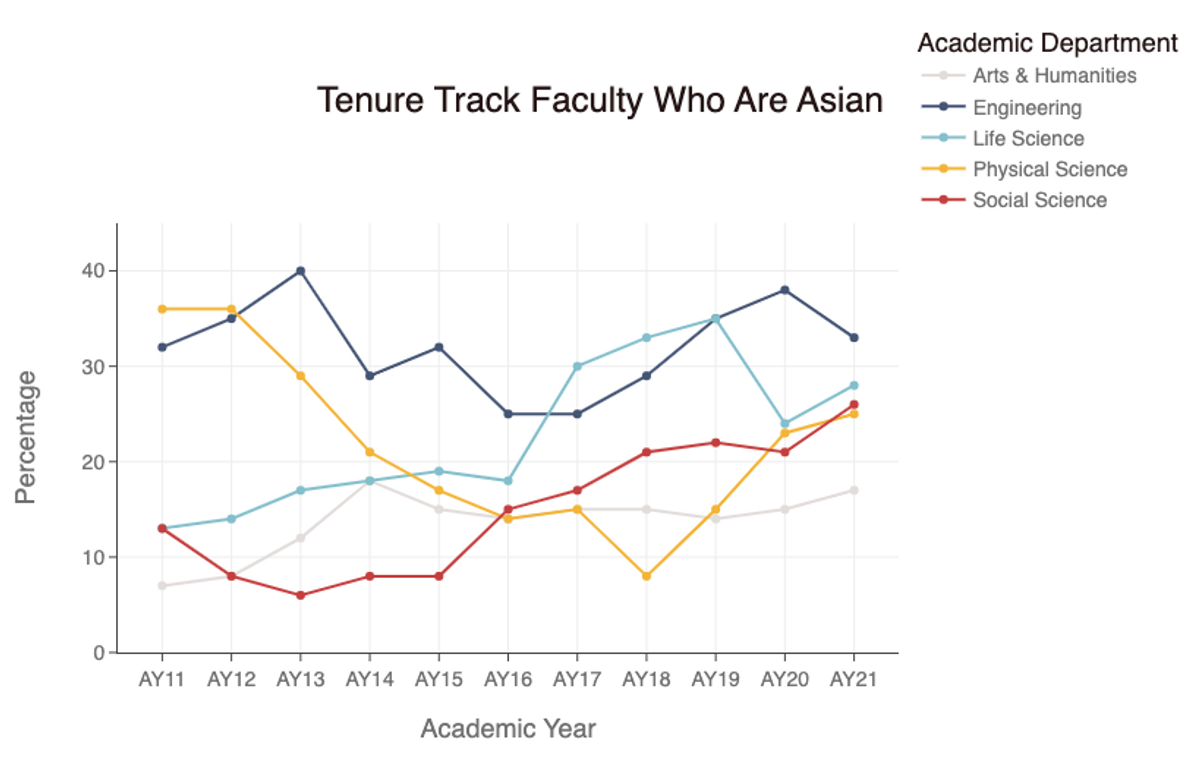 Figure 6: The above graph shows the percentage of tenure track faculty members per department who identify as Asian. The data span from 2011 to 2021.
Figure 6: The above graph shows the percentage of tenure track faculty members per department who identify as Asian. The data span from 2011 to 2021.Across the last ten years, the proportion of faculty that are Asian has experienced slight growth overall in both the tenured and tenure track groups. Among the tenured faculty, the proportion of Asian faculty has experienced slight growth over the ten year interval but has stayed relatively unchanged in recent years across all departments. Among the tenure track faculty, the proportion of Asian faculty varies significantly over time depending on the department.
Decrease in White Faculty, Especially Among The Tenured
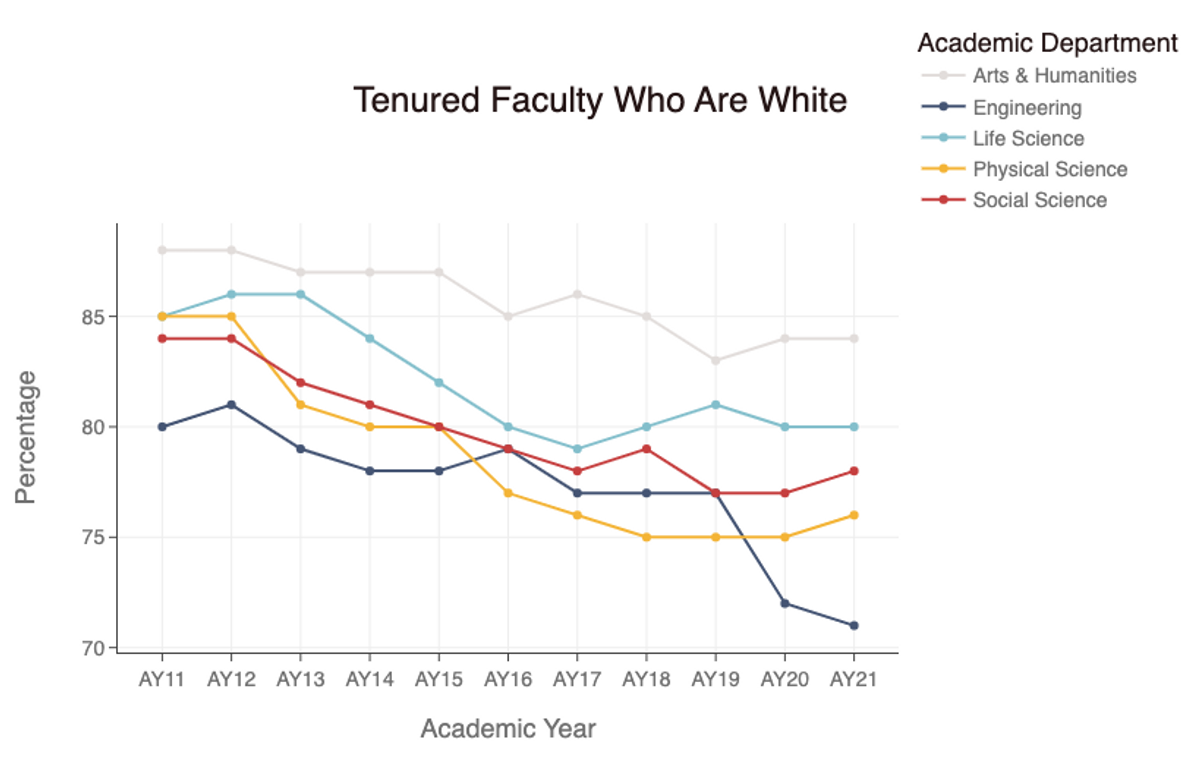 Figure 7: The above graph shows the percentage of tenured faculty members per department who identify as white. The data span from 2011 to 2021.
Figure 7: The above graph shows the percentage of tenured faculty members per department who identify as white. The data span from 2011 to 2021. Figure 8: The above graph shows the percentage of tenure track faculty members per department who identify as white. The data span from 2011 to 2021.
Figure 8: The above graph shows the percentage of tenure track faculty members per department who identify as white. The data span from 2011 to 2021.Across the last ten years, the white faculty proportion has seen the greatest decline out of all groups analyzed, especially in the tenured faculty group. The proportion of white tenured faculty experiences a consistent decline across all academic departments. However, the white population still dominates the tenured group and has stayed relatively unchanged across most departments in recent years. Among tenure track faculty, the proportion of white faculty has either experienced little change or decreased from 2011-2021 in all departments except the Physical Sciences. While the proportion of white faculty in physical sciences was growing from 2012 to 2018, it has experienced a sharp decline since 2018.
Final Remarks
Having examined the trends in faculty diversity across departments, as well as comparing the trends between tenured and tenure track faculty, we see that Harvard’s faculty diversity has not experienced a uniform shift over the past few years.While female and Asian faculty have generally increased steadily from 2011 to 2021, faculty who identify as underrepresented minorities have seen their level of diversity mostly remain stagnant. Nonetheless, the proportion of white tenured and tenure-track faculty has definitely decreased over the past few years. For future research, it may be valuable to investigate why Harvard’s population of URM faculty has not seen increasing diversity.
Acknowledgements
Thank you to Ethan Lee for helping our team find the dataset we used, as well as assisting us as we completed the article. Thank you to Carmen Chan and Ian Espy for providing feedback on our drafts.
